The Crucial MX300 750GB SSD Review: Micron's 3D NAND Arrives
by Billy Tallis on June 14, 2016 9:00 AM ESTMixed Random Read/Write Performance
The mixed random I/O benchmark starts with a pure read test and gradually increases the proportion of writes, finishing with pure writes. The queue depth is 3 for the entire test and each subtest lasts for 3 minutes, for a total test duration of 18 minutes. As with the pure random write test, this test is restricted to a 16GB span of the drive, which is empty save for the 16GB test file.
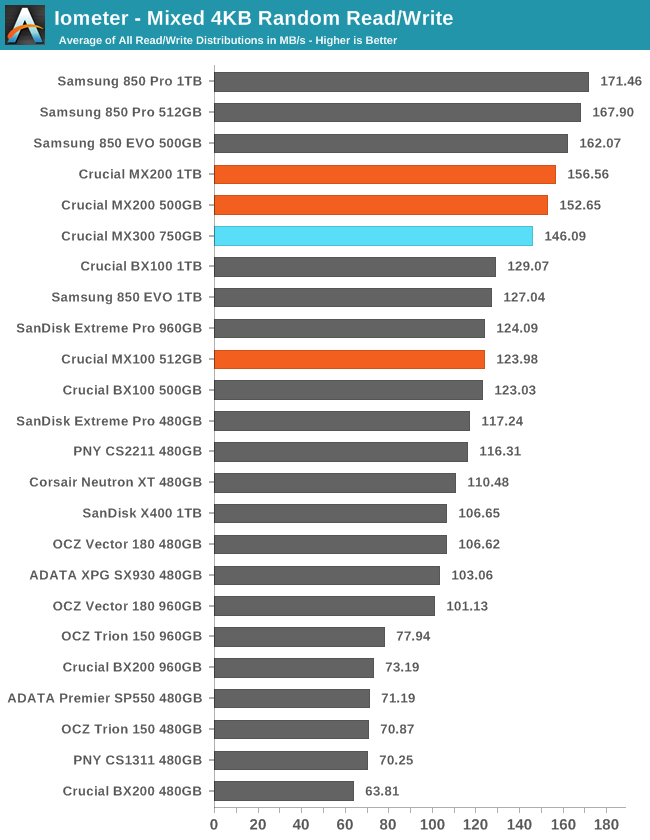
Despite poor random read speeds, the MX300 is only slightly slower than the MX200 on mixed random workloads, and is faster than most MLC drives.
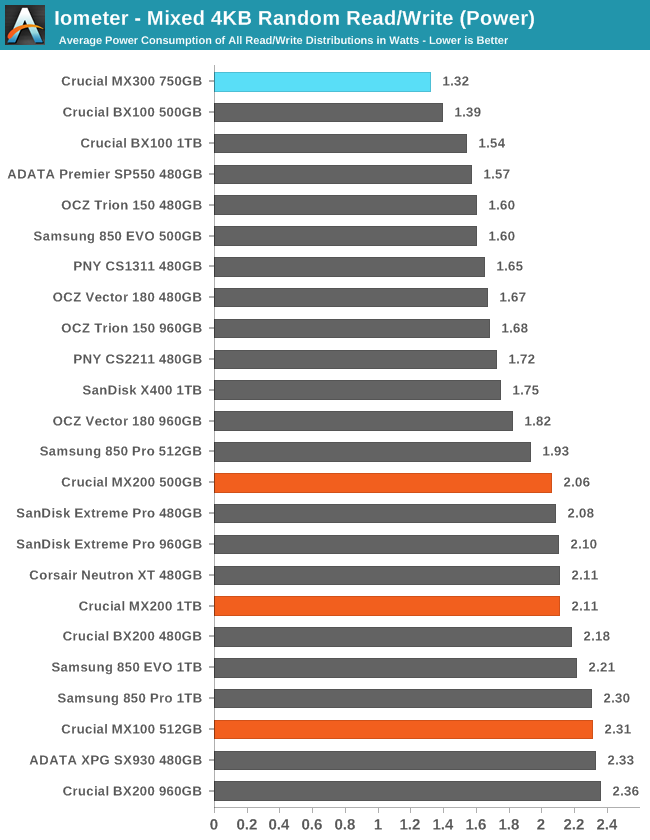
Once more setting a power usage record, the MX300 is more efficient than even the BX100.
 |
|||||||||
The MX300 manages to never decrease in performance when the proportion or writes increases, showing that its SLC write caching is working very effectively. Power consumption doesn't begin to increase until the test is almost completely writes.
Mixed Sequential Read/Write Performance
The mixed sequential access test covers the entire span of the drive and uses a queue depth of one. It starts with a pure read test and gradually increases the proportion of writes, finishing with pure writes. Each subtest lasts for 3 minutes, for a total test duration of 18 minutes. The drive is filled before the test starts.
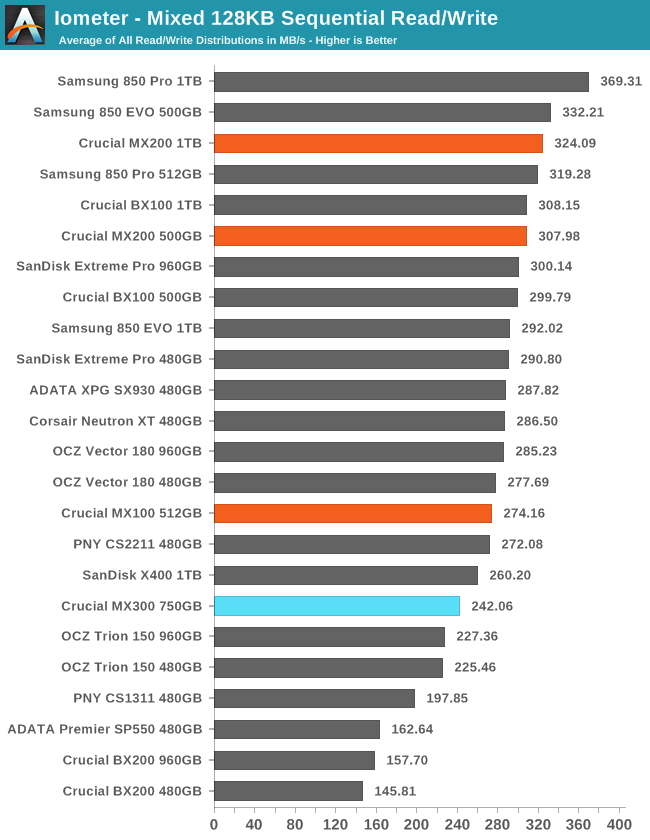
Since SATA drives all perform about the same on sequential reads, rankings on this test are determined mainly by sequential write performance and whether the controller can process the mixed workload effectively. The MX300 is slower than the SanDisk X400 but faster than the other planar TLC drives.
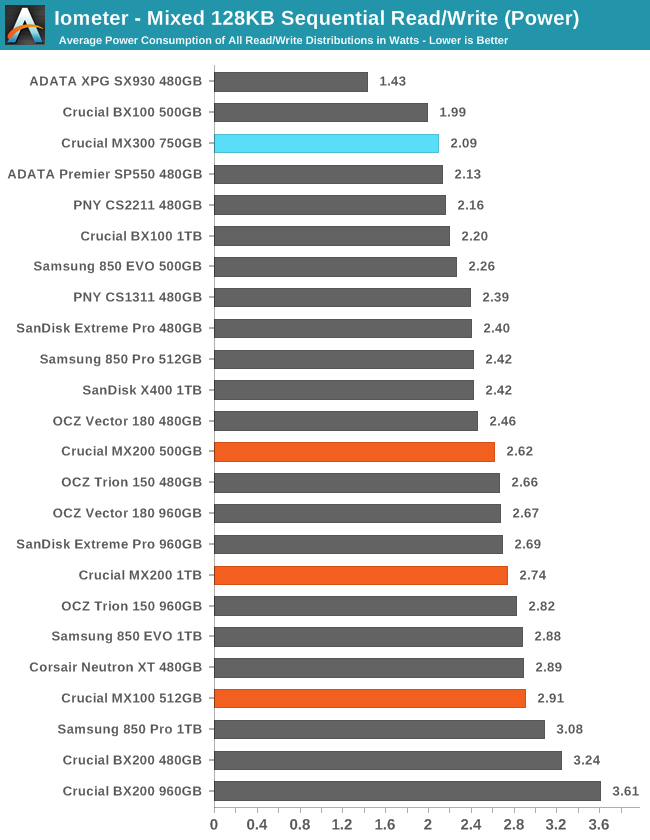
With another third place ranking for power usage, the MX300 beats all the planar TLC drives on efficiency but is unremarkable by MLC standards.
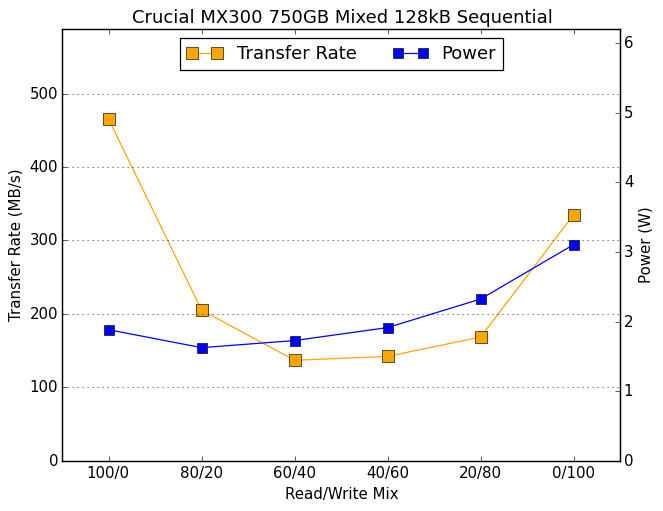 |
|||||||||
The MX300 bottoms out around 126MB/s which would be respectable for a planar TLC drive, but the MX200 never drops below 200MB/s.










85 Comments
View All Comments
redzo - Tuesday, June 14, 2016 - link
They are 2 years late. Two freaking years. Intel's holy grail hybrid disruptive memory tech is going to compete at $/gb with traditional ram + stupidly cheaper samsung 3d nand.ratbaby - Tuesday, June 14, 2016 - link
Intel is working to Micron to produce xsp.TheCurve - Tuesday, June 14, 2016 - link
I always look forward to your stuff, Billy. Nice job and thanks for the hard work!AndrewJacksonZA - Wednesday, June 15, 2016 - link
In the last chart, "SSD Price Comparison (Sorted by Price/GB of Highest Capacity Drive,)" you have the heading as "750TB" As that price, for 750TB, I'll take as many as they can produce!!! :-)Lazlo Panaflex - Wednesday, June 15, 2016 - link
SanDisk ultra II 960GB is on sale for $230 @ the Egg. http://www.newegg.com/Product/Product.aspx?Item=N8...Seems like a pretty good deal.
sunshine - Wednesday, June 15, 2016 - link
$219.70 at Amazon: https://www.amazon.com/SanDisk-Ultra-2-5-Inch-Heig...Lazlo Panaflex - Wednesday, June 15, 2016 - link
nice :)euskalzabe - Sunday, June 19, 2016 - link
OCZ Trion 150 960GB is at $199 at this point.DeepLake - Wednesday, June 15, 2016 - link
How did 512GB Samsung EVO got such a jump since 2014?Adam-James - Wednesday, June 15, 2016 - link
Putting out a new SSD in 2016 and saddling it with SATA III is utterly unacceptable. If you want to make an entry level SSD, you should be using SATA Express. For anything else U.2 or M.2 (and not SATA over M.2, actual NVMe M.2). At this point I think the onus is on journalists and consumers to ignore any manufacturer who tries to sell a new SATA III product. Otherwise the industry is just going to continue spinning its wheels.